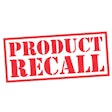Concerns about BSE, whether justified by science or not, continue to plague the US petfood industry. At the most recent Pet food Institute (PFI) Annual Meeting held in October, Dr. Stephen Sundlof, director of FDA's Center for Veterinary Medicine, gave the audience an update on the much anticipated changes to the 1997 BSE-prevention feed rule, commonly called "the feed rule." At that time, Dr. Sundlof was only able to tell the audience that the proposed changes to the rule were eminent, revealing no real news. Eminent it was, as the next day the FDA announcement was delivered to the PFI meeting participants via a live telephone broadcast. To our satisfaction, the FDA proposal was essentially the same position PFI had championed for many months.
FDA's proposed rule
FDA's proposed rule would eliminate the brain and spinal cord of certain cattle from all animal feed, including petfood. By proposing to remove these Specified Risk Materials (SRMs), which have been shown to be the most potentially infective, FDA has taken the single most effective step to further reduce the already extremely low risk of BSE in the US.
In the proposed rule, the SRMs are defined as the brain and spinal cord of cattle 30 months or older, or certain other cattle intended for use in animal feed or petfood. Removing these materials when they are easily identifiable takes them out of the feed stream at the beginning. This eliminates the need for downstream regulatory controls that would be burdensome, costly and difficult to enforce. These could include requirements for segregation of all ruminant products in production, storage and transportation, as well as dealing with poultry litter and plate waste complications. With the SRMs removed, further troublesome feed rule changes are not necessary.
Good for petfood
Why is the proposed rule good for petfood? If implemented, it will no longer permit petfood to become a de facto repository of potentially infective materials when they are removed from human food production. It is widely understood, however, that this change will place additional burdens on the meatpacking and rendering industries to properly remove and dispose of these tissues. This may result in increased costs for ruminant meat and bone meal, but the added result of this new rule will be SRM-free meat and bone meal that is routinely available in the marketplace.
PFI members began to advocate the removal of SRMs in March 2004, when the PFI Board of Directors examined the best way to strengthen the BSE safeguards and insure the continued high esteem the public holds for petfood. At that time, the Board voted to adopt a policy of eliminating SRMs in petfood exactly as defined in the USDA human food regulations. Members began, on a voluntary basis, to make these changes. PFI staff advocated for the policy with other agriculture and food-related associations, which helped move the producer groups toward a position more closely aligned to the FDA proposed rule. PFI vice president Nancy Cook took an active role in the effort.
At every opportunity PFI members have stressed that dogs and cats are safe from BSE. No dog has ever been infected with a transmissible spongiform encephalopathy (or TSEs). Feline TSEs have only been found in Europe during the 1990s and are believed to have been caused by feeding cats raw butcher scraps, not a commercial petfood.
Public perception
The public perception of quality and safety for a consumer product such as petfood is critical. US consumers have great faith in the products PFI members produce and it is vital we maintain this superior record of safety.
Overseas petfood markets are severely restricted by maddening trade barriers put in place with no basis in scientific fact but most often linked to the BSE issue. The FDA's proposed rule would give the US petfood industry an added tool to be highly competitive in these markets. And, consumers worldwide will continue to have the highest confidence in US petfood products.

















